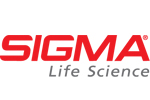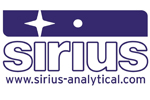08:00 | Registration |
|
Session: ADMET Prediction |
| |
09:00 |  | Keynote Presentation ADMET Prediction - Fact or Fantasy?
Hugo Kubinyi, Retired Professor, BASF SE & University of Heidelberg, Germany
ADMET predictions are most helpful in the evaluation of hits, leads and preclinical candidates. The presentation will discuss the complexity of gastrointestinal absorption by passive diffusion and drug transporters, as well as problems in predicting oxidative metabolism and toxicity. |
|
09:30 | How Well Can We Predict ADME Physicochemical Properties?
John Dearden, Professor, Liverpool John Moores University, United Kingdom
Physicochemical properties such as lipophilicity, aqueous solubility, pKa and several others control ADME. This presentation discusses the prediction of these properties using quantitative structure-property relationships (QSPRs) and dedicated commercial and freeware software programs. |
|
Session: Toxicity |
| |
10:00 | In Silico Toxicology Approaches for Pharmaceuticals: Are Chronic Effects Predictable?
Mark Cronin, Professor, Liverpool John Moores University, United Kingdom
Predicting the long-term, low dose effects of drugs is one of the most challenging areas for in silico toxicology. This presentation will address what the problems are and potential solutions based around a mechanistic understanding of the toxic effects. |
10:30 | Coffee and Networking in the Exhibition Hall |
11:15 | The Application of Transgenic Models to Study Mechanisms of Drug and Chemical Toxicity
Colin Henderson, Staff Scientist and Honorary Senior Lecturer, University of Dundee, United Kingdom
The application of transgenic models is transforming drug discovery and drug development processes. Although they are used extensively in drug discovery, their application in investigative toxicology studies remains limited. This presentation will describe how these models can be used to study pathways of chemical toxicity. |
11:45 | Pharmacogenomics of Drug Disposition: From Polymorphisms to Biomarkers
Urs Meyer, Emeritus Professor, Biozentrum/University of Basel, Switzerland
Interindividual variability in drug efficacy and toxicity is a major cause of therapeutic failure and contributes to high attrition rates during drug development. The presentation will deal with the genetic causes of variability and the use of this knowledge in drug targeting and dose adaptation and as a biomarker of clinical outcome. |
12:15 |  Technology Spotlight: Technology Spotlight:
ADME Studies in Knockout Rats Lacking Key Drug Transporters
Heike Lehrmann, Tactical Marketing Manager, Sigma Aldrich
|
12:30 | Lunch and Networking in the Exhibition Hall |
13:30 | Poster Session |
14:30 | Genetic Toxicology: How to Compare New or Improved Tests with Existing Tests
Richard Walmsley, Professor, University of Manchester, United Kingdom
It is tempting, but not very useful to assess a new in vitro test by comparing its results with results from other in vitro tests. This will be demonstrated with both theoretical and real examples. |
15:00 | Predicting Hepatotoxicity with CellCiphr HCS technology: Rat and Human Hepatotoxicity Predicton: Validation and Case Studies
Katya Tsaioun, CSO, Cyprotex, United States of America
HCS is an established platform used by many pharmaceutical companies for target screening and toxicity assessment. Validation, strategies for using at different stages of drug discovery and case studies using CellCiphr HCS technology are going to be discussed. |
15:30 | Coffee and Networking in the Exhibition Hall |
16:00 | Use of Informatics Approaches in Risk Assessments
Sandeep Modi, Cheminformatician, Unilever, United Kingdom
We have developed several in-silico models for the prediction of the bacterial reverse mutation assay (Ames test), which is widely used as an early alerting system for potential genotoxic chemicals. We have also used two simple integration methods to get consensus predictions and also to improve on the confidence and predictivity of these models. In this talk we will provide a comparison of these methods with other published work. |
16:30 | Close of Conference |



